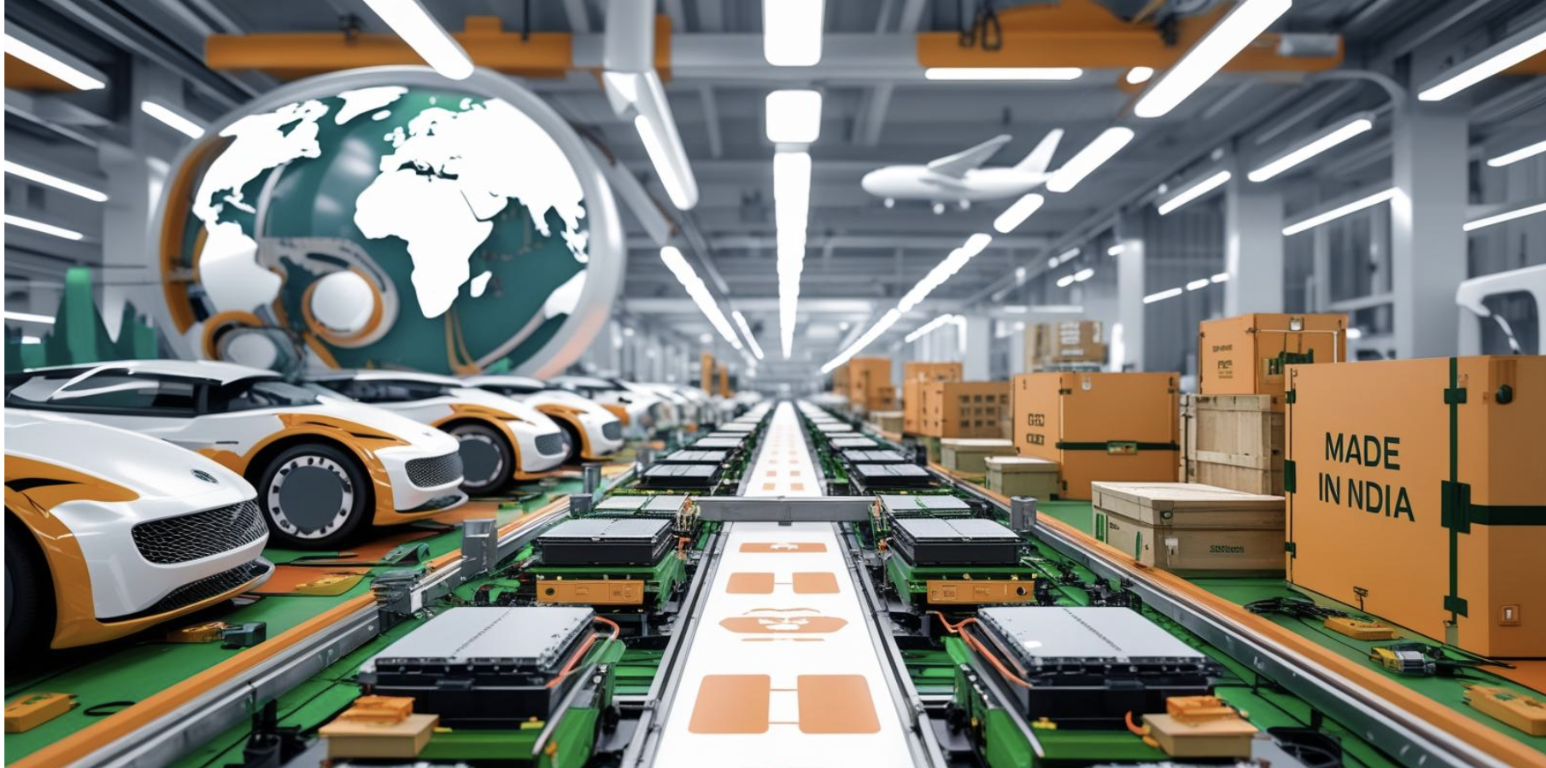Why India Could Become the World’s Biggest Exporter of EV Spare Parts
August 27, 2025


Why India Could Become the World’s Biggest Exporter of EV Spare Parts
1. India’s Manufacturing Advantage
- Cost-competitiveness: India offers manufacturing that is 10–25% cheaper than in Europe or Latin America, giving it a significant price edge.
- Robust industrial base: Ranked as the second-largest steel producer globally, India benefits from a strong foundational input base—excellent for EV component manufacturing.
- Export momentum: The auto components industry achieved exports worth USD 21.2 billion in FY24, with aspirations to reach USD 80 billion by 2030, showcasing a clear trajectory for growth.
2. Rising Demand for EV Components
- Global shifts toward eco-friendly transport are driving up demand for EV-specific parts—battery enclosures, electric motors, controllers, and chargers.
- Indian firms like Shakti Hi-Tech have seen a 22% increase in EV component exports to Europe, supplying high-quality parts such as thermal management modules and drivetrain systems.
- Vishwambhari Auto Parts plans export programs delivering battery casings, wiring harnesses, and motor mounts across Europe, Africa, and Asia.
3. Supportive Government Policies
- Multiple PLI schemes totaling INR 1.97 lakh crore (USD 28b) target EV and advanced automotive manufacturing, including EVs, battery tech, and related components.
- FAME, PMP, and other incentives offer tax breaks, capital support, and preferential duties—encouraging EV part makers to scale domestically.
- Import duty exemptions on key EV battery components effectively reduce costs for exporters.
- Rare-earth magnet production incentives (₹1,345 crore) aim to reduce reliance on China and shore up critical EV component supply chains.
4. Emerging Ecosystem and Infrastructure
- States like Uttar Pradesh and Kanpur are investing heavily in EV parks and component clusters—streamlining production and logistics for EV spare parts.
- The India–UK FTA potentially cuts auto component tariffs from 100% to 10%, opening more favorable export opportunities—especially from Tamil Nadu’s well-established industrial base.
5. Strategic Global Shifts & “China+1” Opportunity
- Global suppliers are diversifying away from China—India is set to be a key beneficiary of this “China+1” strategy.
- The U.S. has imposed a 93.5% import tariff on Chinese graphite anodes. India’s Epsilon is filling the gap, planning anode production facilities both in U.S. and Karnataka.
6. Overcoming Challenges
- Supply constraints: India's rare-earth and battery material sources remain limited, urging national-level strategy and sourcing partnerships.
- Quality inconsistencies and counterfeit parts: Strengthening standardization, certifications, and quality controls remains essential.
- Skill gaps: EV components need new technical competencies—investments in workforce training and upskilling are vital.
7. Why India Could Rise to the Top
India’s edge as a potential leading EV spare parts exporter lies in:
- Cost-effective, skilled manufacturing
- Expanding infrastructure and policy backing
- Thriving state-level EV ecosystems
- Encouraging global trade shifts and export incentives
- Growing export success stories and global partnerships
With continued investment in quality, skill-building, and critical material access, India is well-positioned to dominate the global EV aftermarket.
Conclusion
India has all the building blocks needed to become the world's largest supplier of EV spare parts—from contracts to capital and from factories to free trade advantages. With strategic policy implementation and industrial execution, this vision can soon become reality.
Would you like me to flesh this out into a full 1,200-word article, complete with subheadings, data visuals, or narrative-style personalization for ENTEK’s blog voice?
